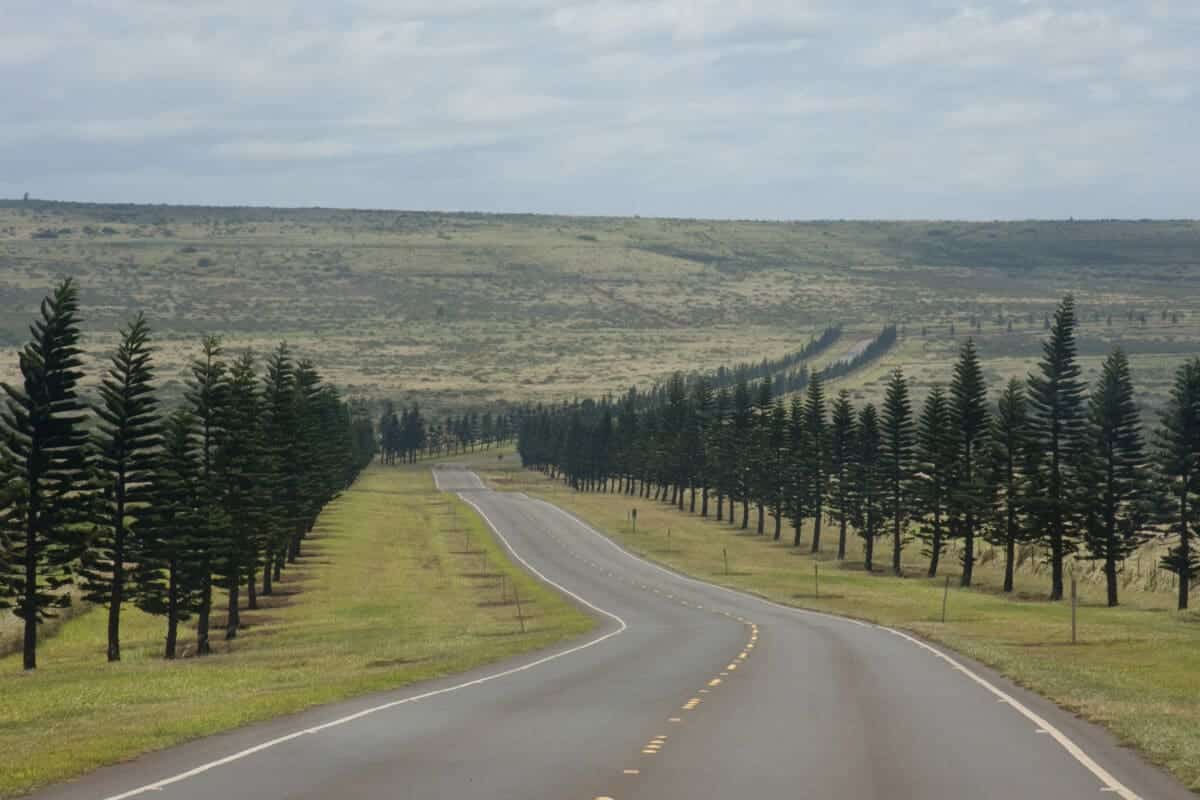The majestic Hawaii Pine trees not only characterize the lush green landscapes of the Hawaiian islands but are also deeply intertwined with the islands’ rich history, culture, economy, and environment. This article sets out to explore the remarkable journey of these stunning trees.
The diversity, accommodating their various types like the Norfolk Island Pine, Caribbean Pine, Monterey Pine, and Cook Pine, will be discussed, grasping their distinctive attributes. Furthermore, we will dive into the practical aspects of these trees, from understanding the proper techniques for their plantation and maintenance to the environmental factors that influence their growth. Lastly, we will delve into their numerous uses and significant role in local and global contexts.
Table of Contents
- Origin and Types of Hawaii Pine Trees
- Plantation and Care for Hawaii Pine Trees
- Environment and Growth Conditions of Hawaii Pine Trees
- Significance and uses of Hawaii Pine Trees
- Related Content
Origin and Types of Hawaii Pine Trees
Exploring the Vibrant Variety of Hawaiian Pine Trees: From Origins to Types
Delving into the world of Hawaiian pine trees is a journey of endless discovery that captivates with every new twist and turn. These evergreens, renowned for their spectacular beauty and awe-inspiring resiliency, are integral to Hawaii’s biodiverse landscapes.
The pine, known scientifically as Pinus, is a genus within Pinaceae, boasting over 120 species. However, the story of their presence in Hawaii might challenge public expectations – it’s a tale of human intervention, not mother nature’s work. Long story short, none of the pine trees in Hawaii are native to the islands.
The original planters in the mid-19th century had forestry and commercial goals in mind, plus an ambitious plan to redefine Hawaii’s windswept plains for agriculture. For example, the Monterey pine (Pinus radiata) was introduced from California to combat the strong winds and prevent erosion from ruining the arable land.
The exciting part is the different types that have graced the archipelago over time. An array of pines, each with unique characteristics, adds color to Hawaii’s verdant palette.

The first stop on this journey is the Cook pine (Araucaria columnaris) – not a true pine but often mistaken for one due to its needle-like leaves. It’s hard to miss, boasting soaring heights of 60-70 feet and distinct tilted growth towards the equator, making its unmistakable silhouette a prominent feature on the Hawaiian horizon.
Next is the widely planted Monterey pine. These trees love Hawaii’s frost-free climate and are known for their adaptability. This species has three needles per bundle and exhibits rapid growth, reaching up to 80 feet tall within two decades.
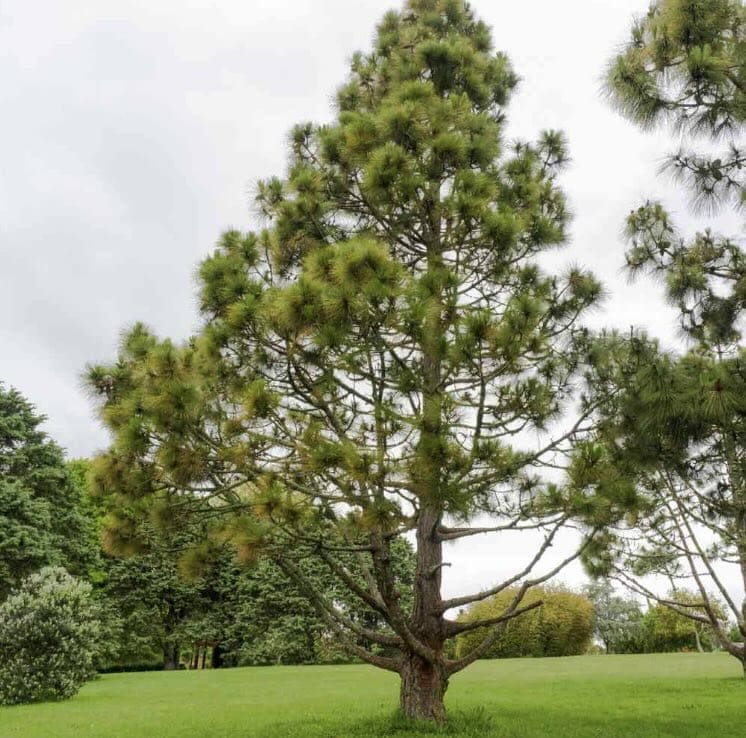
The Canary Island pine (Pinus canariensis) is another species introduced to Hawaii. Known for its distinct resistance to drought, fire, and wind, this species grows extensively, reaching 50-70 feet. Its bark has a unique reddish-brown hue and can be spotted from miles away.
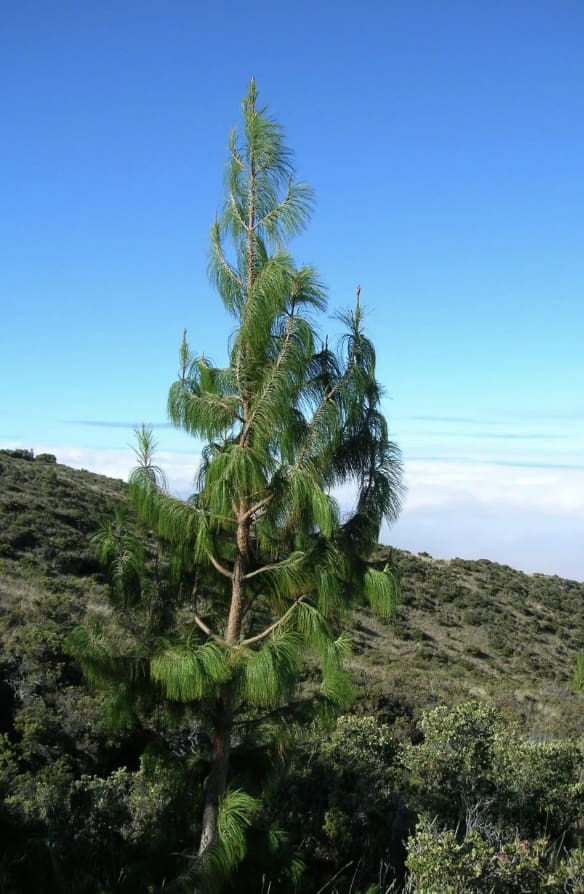
The Mexican Weeping pine (Pinus patula) is a tall, attractive tree that’s found favor in Hawaii’s parks and extensive gardens. This pine gets its name from its distinctly unique drooping branchlets and needles, almost as if the tree is weeping, adding a dramatic, exciting aesthetic.
Fascinatingly, an unexpected by-product of pine tree introduction to Hawaii emerged. A fascinating hybrid pine, dubbed the “Hawaiian Pine” or “Kona Pine,” was discovered in the wild. It’s an unplanned cross-breed of the Monterey pine and the Mexican weeping pine, showcasing nature’s unanticipated innovation. It’s explicitly found in the Kona district of Hawaii and has become a symbol of the state’s fascinating environmental evolution.
There you have it, a mini journey through the pines of Hawaii, each with its unique beauty and fascinating backstory. While it’s worth noting that these are introduced species, their existence nonetheless contributes significantly to this tropical paradise’s diverse and abundant greenery.
With their surprising origins and varied traits, these trees have genuinely become part of Hawaii’s unique tapestry of nature. Now, why not take this newfound knowledge and see how many types of pines you can identify next time you explore the islands? Dive in and savor this delightful part of the fascinating botany hobby.
Plantation and Care for Hawaii Pine Trees
Moving on from the fascinating lore of the Hawaii Pine Trees, the journey continues to a more practical area of interest for hobbyist tree enthusiasts – planting and caring for these exotic pines. This commences with selecting the suitable seedlings, preparing the suitable soil, ensuring the appropriate growth environment, and necessary maintenance practices. Indeed, ushering these green warriors into your garden or yard is rewarding.
Pine trees offer multiple benefits – a lush, green backdrop, robust windbreaks, or strong roots for erosion control. They also are glorious living reminiscences of natural and human histories intertwined in flora.
In selecting Hawaiian pine seedlings, consider the specific preferences of each variety. Cook pine, Hawaiian Pine, and Mexican Weeping Pine prefer well-drained soil and plenty of sunlight. The Monterey pine, however, prefers sandy or loamy soils and can grow in semi-shade. The robust Canary Island pine is highly adaptable.
After selecting an ideal location with good natural lighting, prepare the site for planting. Loosen the soil using a rake or fork and remove any weeds or rocks. Dig a hole about twice the size of the root ball of the pine seedling. Gently place the seedling in the hole, ensuring it does not damage the tender roots. Fill the hole slowly with the soil, lightly firming it around the base of the seedling.
Hawaiian pines, once established, require minimal watering. In the initial stages, water the seedling thoroughly and soak the ground well. A deep watering once a week should suffice, with adjustments according to seasonal rainfall.
While many Hawaiian pines resist pests, watch for signs of infestations or diseases. Monitor yellowing needles or poor growth, which could indicate an unhealthy tree. In those circumstances, gentle intervention with organic pesticides or a soil nutrient boost might be needed.
Pruning is another crucial aspect of pine tree care. Prune sparingly to promote healthy growth and maintain an aesthetically pleasing shape. As pines only put on a single flush of tip growth each spring, make it a point to prune only the new growth, leaving a little bit of the new shoots.
Conclusively, with their slowly spiraling limbs, pine trees create a tranquil atmosphere, offering a soothing aesthetic to any green corner. Planting and caring for Hawaii Pine Trees is not just about adding a touch of green. It is about taking part in a gardening journey that spans eons, encapsulating a biodiverse heritage within one’s yard.
So, immerse yourself in a piney expedition, from planning to planting. Soon, you will find these pines soaring towards the sky, reflecting the magnificence of their Hawaiian roots.
Environment and Growth Conditions of Hawaii Pine Trees
Diving further into the world of the Hawaiian Pine, one must realize that the first step starts with selecting suitable seedlings. Hawaiian Pines are relatively easy to cultivate, but choosing vibrant and healthy seedlings leads to better success.
Next, the soil preparation must be carefully done. Pine trees prefer well-drained soils that are slightly acidic, sandy, or loamy. High-quality compost or organic matter can be worked into the soil to enhance the structure and fertility, creating an optimal growth environment.
Regarding the overall growth conditions, pine trees are relatively adaptable but favor sunny areas. They thrive in areas with sun exposure for at least six hours daily. Although they can withstand partial shade, their growth rate and overall health are palpably better in sunnier spots.
Maintenance practices regarding the sustained growth of Hawaiian Pine trees cannot be emphasized enough. Regular watering is crucial, especially in the early stages of growth and during dry seasons. However, avoid overwatering as this could lead to root rot or other waterborne diseases.
Specifically, for Hawaiian Pines, they have a preference for slightly cooler temperatures and higher altitudes. This preference is one of the reasons you often find these trees thriving in upland areas of the Hawaiian islands.
Preparing the site for planting involves ensuring the soil has a good balance of nutrients, adequate sun exposure, and sufficient room for growth, as these trees can reach significant heights.
Because of their adaptability, Hawaiian Pines are rarely plagued by pests, but it’s essential to be vigilant and observe any changes in the overall health and look of the tree. Regular inspections can go a long way toward disease prevention.
Pruning, an essential maintenance practice, helps maintain the aesthetic appeal and health of the tree. Removing dead, damaged, or diseased branches helps prevent the spread of decay and maintains the visual symmetry of these majestic trees.
Adding to the numerous benefits, pine trees contribute significantly to establishing a tranquil atmosphere. The visual appeal of a lush pine tree, coupled with the soothing effects of the rustling of pine needles in the gentle Hawaiian breeze, can create a calming environment.
In conclusion, planting and caring for Hawaiian Pine trees is more than just gardening. It’s a journey, a testament to the biodiverse heritage of the Hawaiian islands, and a significant contribution to maintaining the breathtaking greenery of the Aloha State. So go ahead, soak up the sunshine, roll up those sleeves, and prepare for a gardening adventure. Who knows? This could be your new favorite corner of the world.
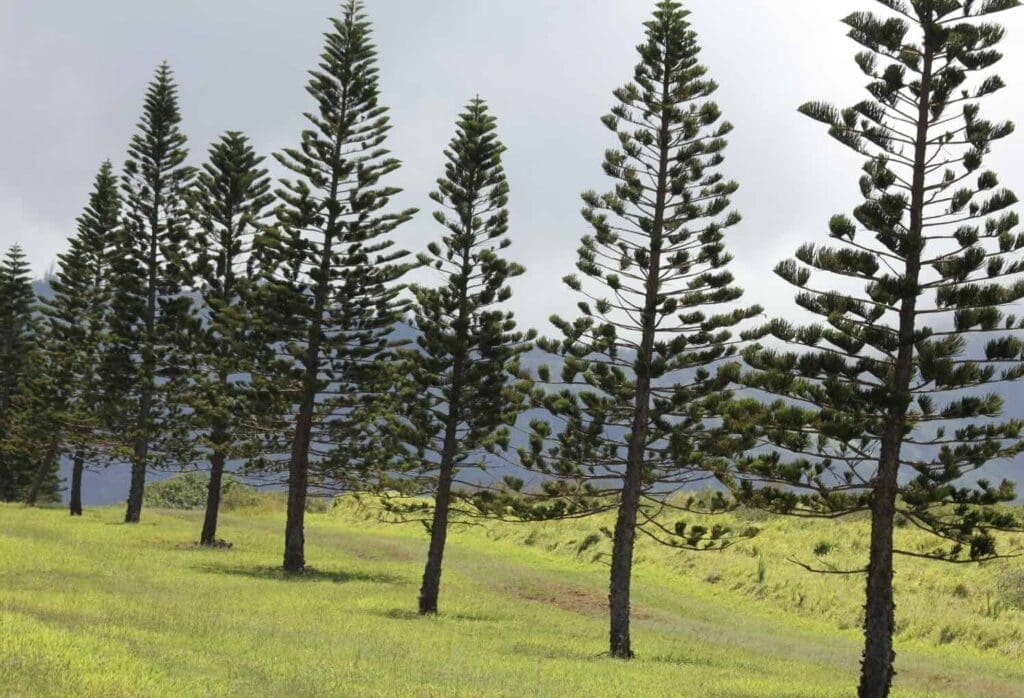
Significance and uses of Hawaii Pine Trees
Delving deeper into the fascinating world of Hawaiian pine trees, it’s essential to highlight their innate contributions beyond botany hobbyists’ collections. From providing shelter to wildlife to contributing raw materials for various industries, these evergreens are versatile agents of significance.
One can’t overstate the importance of one of Hawaii’s most important inhabitants, the Hawaiian honeycreeper birds. Nesting in the lofty heights of these conifers, they find solace from the prying eyes of predators. For biologists, ornithologists, and the average nature observer, this bird-pine relationship showcases symbiosis and survival in nature.
Did you know these pines are also the key to beekeeping? Pine trees in Hawaii are a valued pollen source for honey bees, producing a unique variety of honey that carries the subtle flavor of pine. Thus, these trees are essential to a delicious and nutrient-rich food production process.
In addition to being a natural pollinator attractor, the resin of some Hawaiian Pine species is a prized commodity. It is harvested and used in various industries, from making varnishes due to its sticky nature to being an essential element in many traditional Hawaiian recipes.
Speaking of industries, let’s move on to another significant use of the Hawaiian pine trees – lumber production. While Hawaiian pines are not native, the successful acclimatization of these species has led to a boon for the local timber industry. Hawaiian pine wood is unique, light, and durable, widely used for construction, flooring, cabinetry, and more.
Last but not least, the aesthetic magnitude of these majestic trees is harnessed in landscape architecture. With their resistance to harsh conditions, Canary Island pines are often deployed in outdoor designs for their hardy and attractive nature. The graceful drooping architecture of the Mexican Weeping pine finds its place in gardens and parks for its aesthetic appeal.
Thus, Hawaii’s pine trees are multifaceted entities contributing significantly and diversely beyond their verdant beauty. Their value spans ecology, industry, gastronomy, architecture, and more.
Indeed, these towering giants of the tropics stand as a testament to nature’s versatility and resilience, making them a rewarding focus for any pine connoisseur or hobbyist. When you see or plant a Hawaiian pine tree, you’ll understand the layers of importance within each branch and needle.
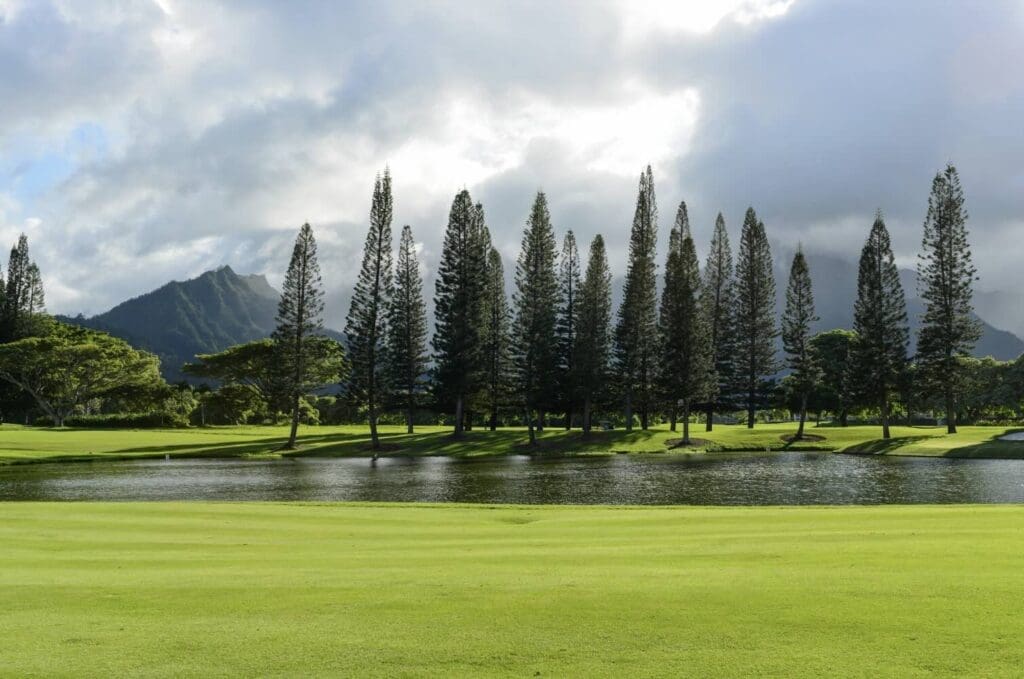
Above all, the Hawaii Pine trees stand as a testament to the harmonious balance of nature, integrating beauty, culture, economies, and environment.
Exploring their journey from their origin, the multiple types, to their ideal environment and eventual uses, it becomes evident how these charming trees have taken root in the heart of Hawaii and are growing in global appreciation.
While the plantation and care routine of these trees quite practically make us more involved with these trees, understanding their intrinsic worth signifies their value within the ecological system and our everyday lives.
As we increasingly engage with these trees, they cease to be mere landscape elements and become the pillars of the varied yet interconnected existence that we all share.
If you are interested in seeing how Mondoro can be a valuable partner for you for wood furniture products – we would love to talk to you to see how we can help you.
Find out more about how Mondoro can help you create, develop, and manufacture excellent home decor and furniture products – don’t hesitate to contact me, Anita. Check out my email by clicking here or become a part of our community and join our newsletter by clicking here.
Mondoro gives out a FREE Lookbook to anyone interested. You can receive a copy of our latest Lookbook by clicking here.
Listen to our Podcast called Global Trade Gal. You can find it on all major podcast platforms. Try out listening to one of our podcasts by clicking here.
Subscribe to our Mondoro Company Limited YouTube Channel with great videos and information by clicking here.
Related Content
Is Nickel A Natural Element? All About Nickel And Its Everyday Uses
Nickel is a natural element as it is found in nature. It is a hard yet malleable and ductile metal with a shiny silver color with a slight gold tinge. Nickel is found mainly in Russia, South Africa, Canada, Australia, and some parts of China and Vietnam.
You can learn more by reading our blog, Is Nickel A Natural Element? All About Nickel And Its Everyday Uses by clicking here.
What Is The Mother Of Pearl Shell Used In Home Decor Products?
Mother of pearl, also known by the scientific name of nacre, is a pearl layer on the inner layer of the oyster shell. This pearl layer of the oyster is taken off the outer oyster shell. Then the leftover inner pearl shell is cut into various small shapes and sizes to be glued onto various home decor products such as mirrors, boxes, trays, and lamp bases.
You can read our blog on What Is The Mother Of Pearl Shell Used In Home Decor Products? by clicking here.
Home Interior Mirror Ideas, Manufacturing Home Decor Mirrors
Many Interior designers use mirrors to help them with their decorating. This is because a mirror can become a design focal point for any room. A mirror can help brighten a dark space and make a room look larger.
You can learn more by reading our blog, Home Interior Mirror Ideas, Manufacturing Home Decor Mirrors, by clicking here.

